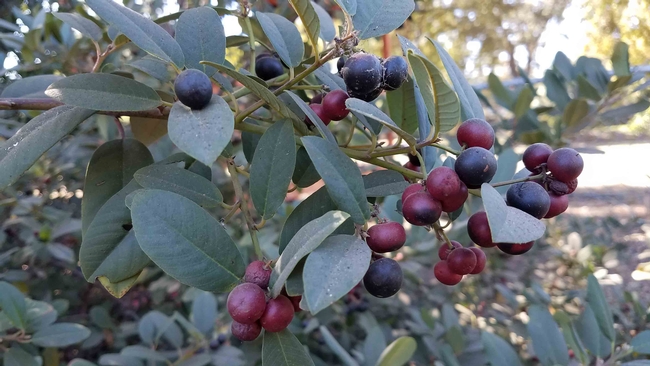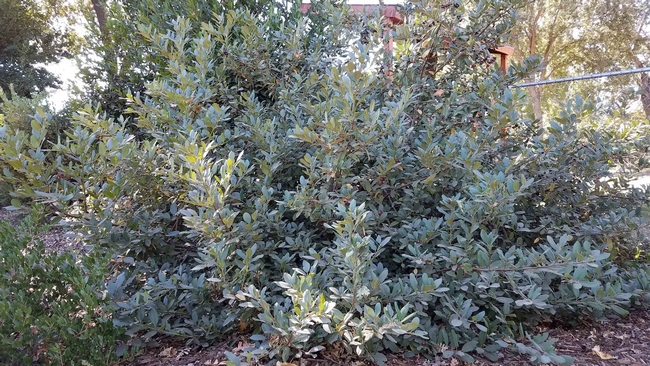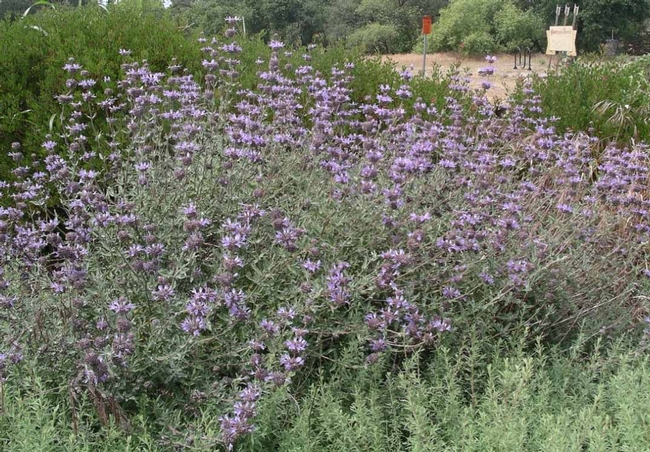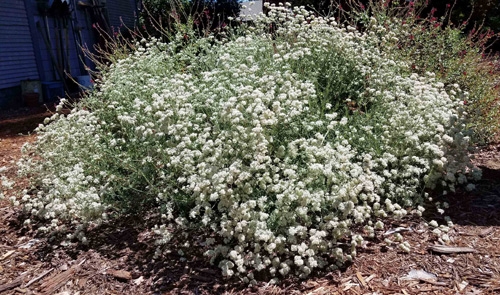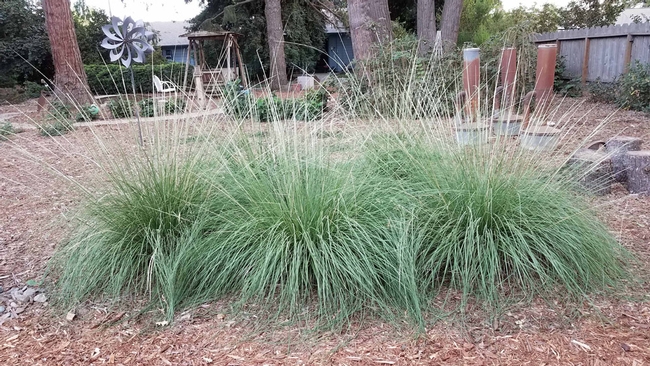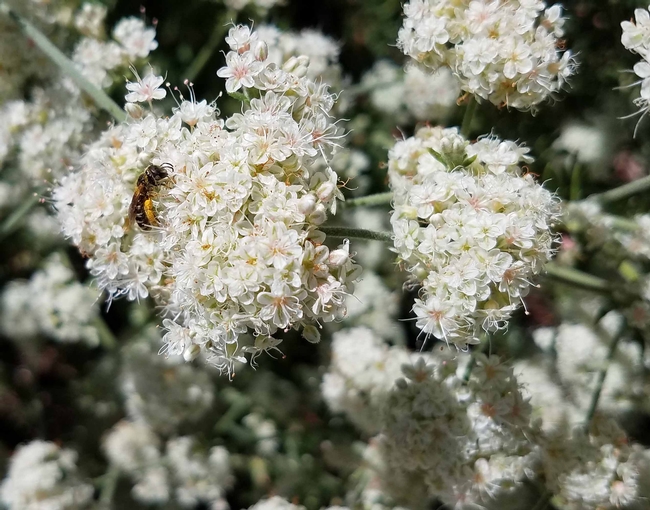One approach to dealing with drought conditions in the garden is to turn to native plants that are well-acclimated to our local environment. Some gardeners new to planting natives may be concerned that these plants might require special care, but in general they need not worry. While some natives can be difficult in the garden, most are not, and many are very easy to grow. By far the best time for planting natives is mid- September through late winter. The weather is cool, nature helps with irrigation, and roots have time to grow before the weather turns hot again.
Eva Case coffeeberry berries (Frangula californica), J. Alosi
Eva Case coffeeberry (Frangula californica), J. Alosi
Cleveland sage, Cindy Weiner
Jason Mills, owner of Ecological Solutions, suggests, “If you're looking for an evergreen shrub, why not try giving the local and less commonly used hollyleaf redberry (Rhamnus ilicifolia) a shot?” Hollyleaf redberry has small serrated leaves, resembling holly. It grows best in full sun or partial shade. The flowers are small and inconspicuous but develop into beautiful red fruit, which provide food for birds. It grows five to ten feet tall and needs no summer water once established.
California buckwheat (Eriogonum fasciculatum), J. Alosi
Deergrass (Muhlenbergia rigens), J. Alosi
Growing natives can be easy if you give careful consideration to the plant's cultural requirements. Mills states, “In the end it all comes down to putting the right plant in the right spot. We look to nature and try to match the conditions (substrate, moisture, light exposure) found in remaining intact habitats when we create our designs and implement native landscapes. When you get it right, you'll know, as they thrive for years to come with little to no water and maintenance and provide crucial resources for wildlife along the way.”
UC Master Gardeners of Butte County are part of the University of California Cooperative Extension (UCCE) system. To learn more about us and our upcoming events, and for help with gardening in our area, visit our website. If you have a gardening question or problem, email the Hotline at mgbutte@ucanr.edu (preferred) or call (530) 538-7201.
